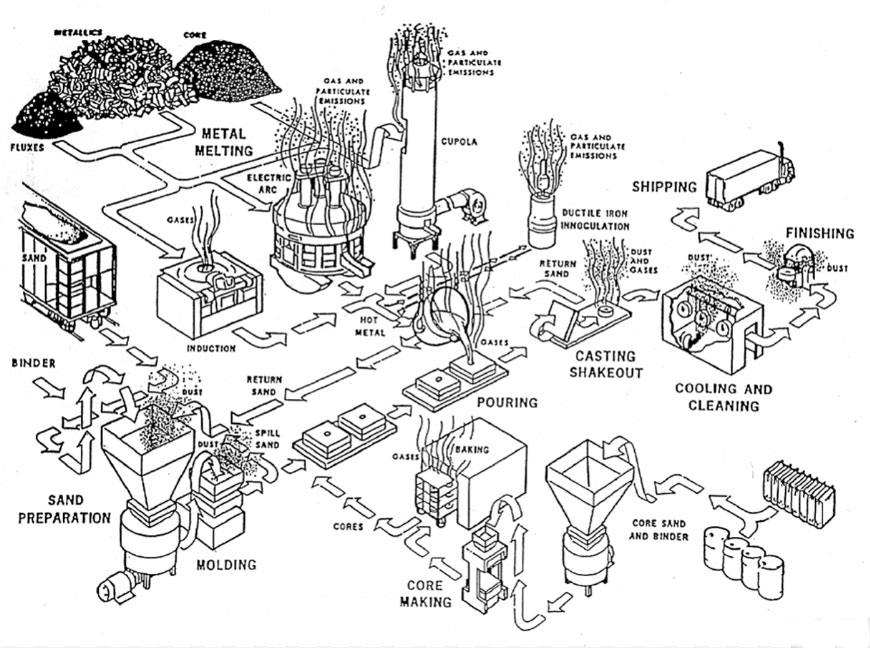
Sand casting offers a greener and more sustainable approach to manufacturing, aligning with the increasing global focus on environmental responsibility. The process incorporates several eco-friendly elements that contribute to its sustainability. Here’s how sand casting promotes green practices and sustainable manufacturing:
1. Reusable Molds:
- Sand molds used in sand casting are reusable, reducing the need for continuous production of new molds and minimizing waste.
- Reclamation systems allow for the recycling of excess sand, further reducing material consumption and waste generation.
2. Low Energy Consumption:
- Sand casting requires lower energy consumption compared to other manufacturing processes like die casting or machining.
- The relatively low energy demand helps conserve resources and reduces greenhouse gas emissions.
3. Material Efficiency:
- Sand casting optimizes material use by producing parts with minimal material waste.
- This efficiency contributes to the conservation of raw materials and reduces the environmental impact of material extraction and processing.
4. Reduced Scrap Generation:
- Sand casting minimizes the generation of scrap during the manufacturing process, leading to less material ending up in landfills.
5. Eco-Friendly Materials:
- Sand casting can utilize a wide range of eco-friendly materials, including recycled metals and alloys, which contribute to a circular economy.
6. Eco-Conscious Sand Options:
- Some sand casting foundries offer eco-conscious sand options, such as organic or biodegradable binders, reducing the environmental impact of sand casting.
7. Low Toxicity:
- The sand casting process involves fewer toxic chemicals and emissions compared to some other industrial processes.
- This promotes a safer and healthier working environment for employees.
8. Durability and Longevity:
- Sand castings are known for their durability and longevity, contributing to the long service life of products and reducing the need for frequent replacements.
9. Green Sand Reclamation:
- Green sand, one of the most commonly used molding materials in sand casting, can be reclaimed and reused, promoting resource efficiency.
10. Sustainable Product Lifecycle:
- Sand castings contribute to the sustainable lifecycle of products by ensuring they are robust, repairable, and recyclable.
Manufacturers increasingly recognize the importance of adopting sustainable practices, and sand casting provides a greener approach to manufacturing. The combination of reusable molds, low energy consumption, material efficiency, and eco-friendly material choices makes sand casting an environmentally responsible manufacturing method. As the demand for sustainable manufacturing grows, sand casting stands as a viable and eco-conscious solution for producing high-quality parts while minimizing the environmental footprint.
